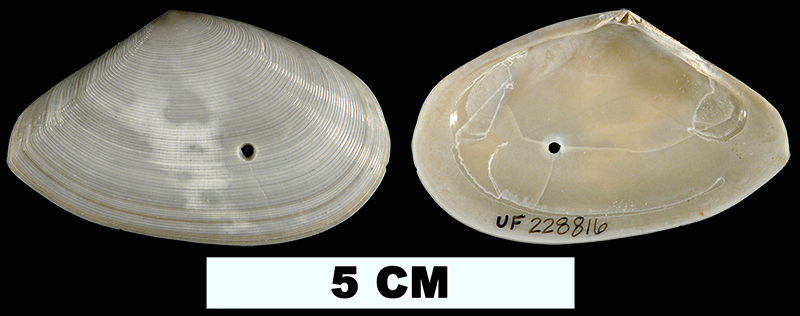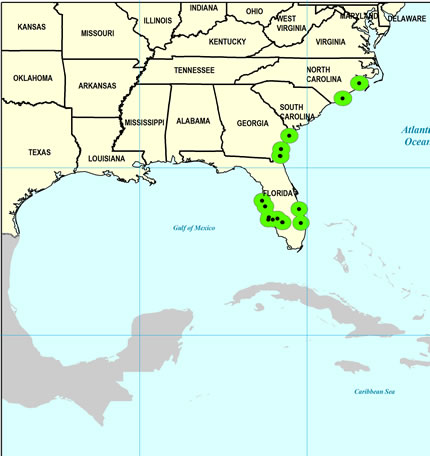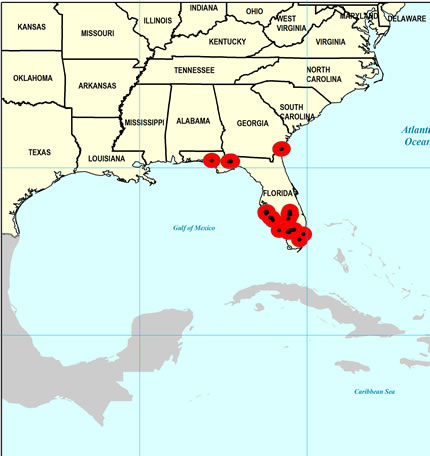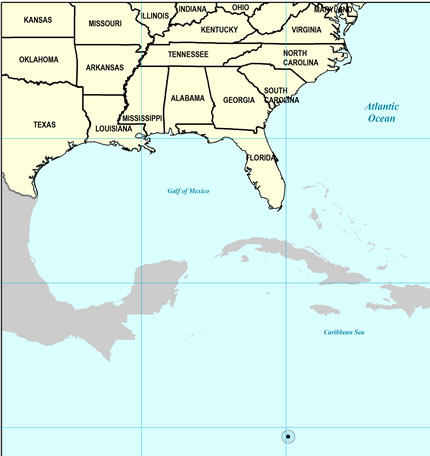
Eurytellina alternata
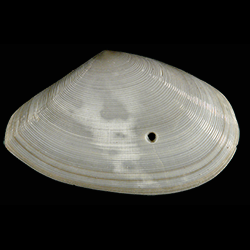
- Phylum: Mollusca
- Class: Bivalvia
- Order: Imparidentia
- Family: Tellinidae
- Genus: Eurytellina
- Species: Eurytellina alternata (Say, 1822)
- Common Name: Alternate tellin
Geological Range
Late Miocene to Late Pleistocene; Recent.
Paleogeographic Distribution
Panama to North Carolina.
Remarks
For information on the modern distribution of the species, see Malacolog.
Original Description (from Say, 1822, p. 275-276):
"Shell compressed, oblong, narrowed and angulated before, white; numerous parallel, equal, equidistant, impressed concentric lines, which on the anterior margin are alternately obsolete; interstitial spaces flat; within tinged with yellow, a callous line, which is sometimes obsolete, passes from behind the hinge to the inner margin of the posterior cicatrix, and another from before the hinge to the inner margin of the anterior cicatrix; anterior hinge tooth emarginate; posterior lamellar tooth very near the cardinal teeth, so as to appear like a primary tooth, that of the right valve wanting; anterior lamellar tooth at the extremity of the ligament; anterior hinge slope declining in a somewhat concave line to an obliquely truncated tip.
Length one inch and one-fourth.
Width two inches and one-fifth.
Thickness two-fifths of an inch.
Inhabits the coast of Georgia and East Florida.
Cabinet of the Academy and Philadelphia Museum.
Rather a common shell, beautifully and very regularly striated. When cast upon the beach, one of the valves is very commonly perforated near the hinge; this operation, it would seem, is most frequently performed upon the left valve, as, of ten specimens thus mutilated, I have but two with the perforation upon the right valve. It varies in being destitute of the yellow colour within. It is probably allied to T. punicea, but I have never found it so far north as the coast of New Jersey. It is much more elongated than the latter, the striae are far more distinct, and it is entirely and always destitute of the rose-coloured bands, and lines, such as are represented in Horn's figure of that shell. It cannot be the T. angulosa of Gmel., as that species is described to be suborbicular, and to have the lateral teeth remote, whereas the alternata has but one of the lateral teeth remote."
To access this description in its original formatting through the Biodiversity Heritage Library, click here.
Stratigraphic Occurrences
- Late Pleistocene
- Anastasia Formation (S. FL)
- Fort Thompson Formation (S. FL)
- Neuse Formation (NC)
- Satilla Formation (N. FL, GA)
- Middle Pleistocene
- Bermont Formation (S. FL)
- Canepatch Formation (SC)
- Early Pleistocene
- Caloosahatchee Formation (S. FL)
- Nashua Formation (N. FL)
- Waccamaw Formation (SC)
- Late Pliocene
- Duplin / Raysor formations (GA)
- Jackson Bluff Formation (N. FL)
- Tamiami Formation (Pinecrest Beds) (S. FL)
- Late Miocene
- Gatun Formation (Panama)
